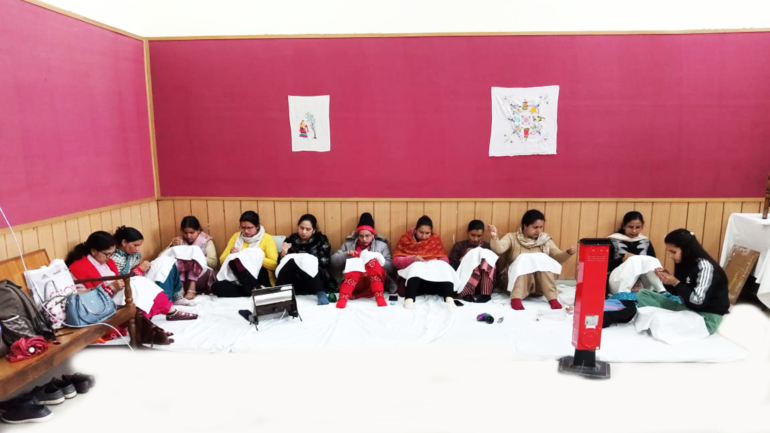Founded in the year 1908 to honour Raja Bhuri Singh, Bhuri Singh Museum is located in close proximity to Chaugan town of Chamba. Initially this museum was started with the paintings added by Raja Bhuri Singh but now it includes rich collections of items like carved doors from the old palaces, copper plate grants, frescoes, miniature paintings, and many other items of the historical period. The Prasastis of Sarahan, Mul Kihar and Devi-ri-kothi are in Sarda script, recollecting the major facets of the medieval history of Chamba.
You can also enjoy seeing the paintings of Basohli School, showing the scenes from the Ramayana and the Bhagavata Purana. Some of the antique items of the museum include coins, arms and armor, jewelry of the region, royal costumes, decorative items, musical instruments, etc. If you are keen to know and understand the entire history and culture of Chamba, this museum is a must visit place for you. It remains open on all weekdays from 10 AM to 5 PM, except Mondays.
Visitor-focused on Painting.
This Museum is named after the Great King Raja Bhuri Singh, it was inaugurated on 14th September 1908, during the rule of Raja Bhuri Singh. Bhuri Singh Museum is located close to Chaugan town of Chamba district, Himachal Pradesh. It was originally started with the paintings donated by Raja Bhuri Singh. With time Bhuri Singh Museum gained more collection and more popularity too. Today it is one of the most popular attractions of Himachal Pradesh. The Bhuri Singh Museum holds few great and valuable collection of carved doors from the old palaces which signify the richness of the Chamba history, incredible frescoes artworks, antique copper plate grants, old miniature paintings, remarkable title deeds and ancient inscriptions on the medieval antiquity of Chamba. J. Ph. Voghel, an Indologist (Indian studies is the academic study of the languages, literature, history and cultures of India) working for the…
- A
- B
- C
- D
- E
the Archeological Survey of India, travelled throughout Chamba and discovered many old inscriptions spread all over the valley, which are now displayed in the Bhuri Singh Museum.
Most of these inscriptions including the Prasastis of Sarahan, Devi-ri-Kothi and Mul Kihar are in Sarda script and reveal some important perspectives of the medieval history of Chamba.
Along with these, you can also behold the fabulous artwork of the paintings belonging to the Basohli School and portraying scenes from great Indian epics Bhagwat Purana and Ramayana.
The paintings of Guler-Kangra School, depicting scenes from mythological stories of Krishna are beautiful artwork. Also, there are other splendid portraits and incredible artworks found here.
The former building was shredded down and replaced by concrete monolith, which was inaugurated in 1975 and holds the Bhuri Singh Museum.
The artefacts and antiques of the museum include a variety of coin collections, royal costumes, traditional jewellery of the Himachal region, several musical instruments, many decorative items, arms and armour, etc. This is a must visit if you are a history buff or enthusiastic about knowing the history and culture of Chamba.
On Exhibit: Bhuri Singh
“The total of 67 rajas who have ruled Chamba district since the Principality of Bharmour was established in the 6th century, beginning with Raja Maru Indeed, it is believed to have been an isolated case in the history of India that the Chamba kingdom remained independent without interference for over 1000 years.”
Museum
Buildings in Chamba were traditionally constructed using local materials. Buildings were made out of dry stone masonry, with the walls and floors of the older houses plastered with a concoction of clay and cow-dung.Thick wooden beams were used to support the walls, paying attention to durability and to withstand earthquakes, and wooden construction was often used to support the The staircases and doors were made from wood, with the doors often decorated in religious reliefs and flanked by two lamps to light it at night. Before the arrival of the British, who introduced roofs to Chamba, roofs were covered with planks, coated in clay.Few of these houses remain today, although a number still have wood-clay roofs in villages in the suburbs.

